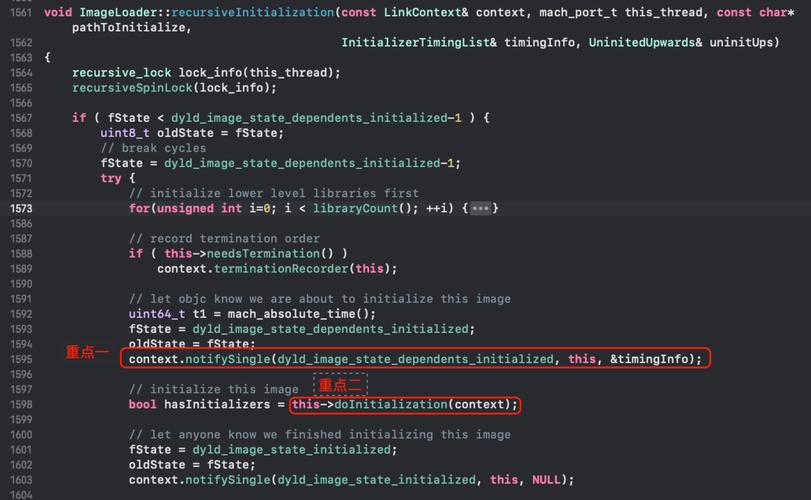1.介绍
上下文切换是操作系统中一个基本概念,它通过允许多个进程共享单一CPU,实现了多任务处理。本文对上下文切换机制、实现细节和性能影响进行了深入探讨。
2.理解上下文切换定义和基本概念
上下文切换是指存储和恢复进程的状态(上下文),以便在稍后以相同点重新执行。这使 CPU 资源能够在多个进程之间进行时间共享。
为什么需要上下文切换涉及的组件
过程控制块(PCB)
CPU 寄存器
上下文切换机制硬件支持
现代处理器提供特定指令和功能以支持上下文切换:
// Example of hardware-specific register definitions
typedef struct {
uint32_t r0;
uint32_t r1;
uint32_t r2;
uint32_t r3;
uint32_t sp;
uint32_t lr;
uint32_t pc;
uint32_t psr;
} hw_context_t;
处理器状态
处理器状态包括:
上下文切换期间的内存管理
struct mm_struct {
pgd_t* pgd; // Page Global Directory
unsigned long start_code; // Start of code segment
unsigned long end_code; // End of code segment
unsigned long start_data; // Start of data segment
unsigned long end_data; // End of data segment
unsigned long start_brk; // Start of heap
unsigned long brk; // Current heap end
unsigned long start_stack; // Start of stack
};
4.实现细节上下文切换步骤保存当前进程状态选择下一个进程更新内存管理结构恢复新进程状态
这里有一个简化的实现:
#include
#include
#include
#define STACK_SIZE 8192
typedef struct {
ucontext_t context;
int id;
} Process;
void function1(void) {
printf("Process 1 executingn");
}
void function2(void) {
printf("Process 2 executingn");
}
void context_switch(Process* curr_process, Process* next_process) {
swapcontext(&curr_process->context, &next_process->context);
}
int main() {
Process p1, p2;
char stack1[STACK_SIZE], stack2[STACK_SIZE];
// Initialize process 1
getcontext(&p1.context);
p1.context.uc_stack.ss_sp = stack1;
p1.context.uc_stack.ss_size = STACK_SIZE;
p1.context.uc_link = NULL;
p1.id = 1;
makecontext(&p1.context, function1, 0);
// Initialize process 2
getcontext(&p2.context);
p2.context.uc_stack.ss_sp = stack2;
p2.context.uc_stack.ss_size = STACK_SIZE;
p2.context.uc_link = NULL;
p2.id = 2;
makecontext(&p2.context, function2, 0);
// Perform context switches
printf("Starting context switching demonstrationn");
context_switch(&p1, &p2);
context_switch(&p2, &p1);
return 0;
}
数据结构
struct task_struct {
volatile long state; // Process state
void *stack; // Stack pointer
unsigned int flags; // Process flags
struct mm_struct *mm; // Memory descriptor
struct thread_struct thread; // Thread information
pid_t pid; // Process ID
struct task_struct *parent; // Parent process
};
内核实现
内核维护一个调度器,决定下一个要运行的进程:
struct scheduler {
struct task_struct *current;
struct list_head runqueue;
unsigned long switches; // Number of context switches
};
5.性能考虑上下文切换成本
影响上下文切换开销的因素:

CPU架构内存系统操作系统优化技术进程亲和力
#define _GNU_SOURCE
#include
void set_cpu_affinity(int cpu_id) {
cpu_set_t cpuset;
CPU_ZERO(&cpuset);
CPU_SET(cpu_id, &cpuset);
sched_setaffinity(0, sizeof(cpu_set_t), &cpuset);
}
CPU亲和性(affinity)是指操作系统在分配进程到CPU核心时的一种偏好设置,它决定了进程更倾向于在特定的CPU核心上运行,而不是在多个核心之间频繁迁移。设置CPU亲和性可以提高进程的运行效率,减少因进程在核心间迁移而产生的上下文切换开销。通过绑定进程到特定的CPU核心,可以确保该进程的资源(如缓存)得到更有效的利用,从而提升系统的整体性能。
TLB优化
// Example of TLB optimization code
static inline void flush_tlb_single(unsigned long addr) {
asm volatile("invlpg (%0)" ::"r" (addr) : "memory");
}
6.代码示例
以下是一个完整的示例,演示了通过性能测量进行上下文切换:
#include
#include
#include
#include
#include
#define NUM_SWITCHES 1000
typedef struct {
struct timespec start_time;
struct timespec end_time;
long long total_time;
} timing_info_t;
void measure_context_switch_overhead(timing_info_t *timing) {
pid_t pid;
int pipe_fd[2];
char buf[1];
pipe(pipe_fd);
clock_gettime(CLOCK_MONOTONIC, &timing->start_time);
pid = fork();
if (pid == 0) { // Child process
for (int i = 0; i 0], buf, 1);
write(pipe_fd[1], "x", 1);
}
exit(0);
} else { // Parent process
for (int i = 0; i 1], "x", 1);
read(pipe_fd[0], buf, 1);
}
}
clock_gettime(CLOCK_MONOTONIC, &timing->end_time);
timing->total_time = (timing->end_time.tv_sec - timing->start_time.tv_sec) * 1000000000LL +
(timing->end_time.tv_nsec - timing->start_time.tv_nsec);
}
int main() {
timing_info_t timing;
printf("Measuring context switch overhead...n");
measure_context_switch_overhead(&timing);
printf("Average context switch time: %lld nsn",
timing.total_time / (NUM_SWITCHES * 2));
return 0;
}
7.真实案例
让我们来看看现实操作系统是如何实现上下文切换的:
/*
* context_switch - switch to the new MM and the new thread's register state.
*/
static __always_inline struct rq *
context_switch(struct rq *rq, struct task_struct *prev,
struct task_struct *next)
{
struct mm_struct *mm, *oldmm;
prepare_task_switch(rq, prev, next);
mm = next->mm;
oldmm = prev->active_mm;
/* Switch MMU context if needed */
if (!mm) {
next->active_mm = oldmm;
atomic_inc(&oldmm->mm_count);
enter_lazy_tlb(oldmm, next);
} else
switch_mm(oldmm, mm, next);
/* Switch FPU context */
switch_fpu_context(prev, next);
/* Switch CPU context */
switch_to(prev, next, prev);
return finish_task_switch(prev);
}
8.进一步阅读”Understanding the Linux Kernel” by Daniel P. Bovet and Marco Cesati”Operating Systems: Three Easy Pieces” by Remzi H. Arpaci-Dusseau”Modern Operating Systems” by Andrew S. TanenbaumLinux Kernel Documentation:Link9.结论
上下文切换是现代操作系统提供多任务功能的关键机制。了解其实现细节和性能影响对于系统程序员和操作系统开发人员来说至关重要。虽然上下文切换会带来开销,但各种优化技术可以帮助最大限度地减少对系统性能的影响。
10.参考资料Aas, J. (2005). Understanding the Linux 2.6.8.1 CPU Scheduler. Silicon Graphics International.Love, R. (2010). Linux Kernel Development (3rd ed.). Addison-Wesley Professional.Intel Corporation. (2021). Intel® 64 and IA-32 Architectures Software Developer’s Manual.McKenney, P. E. (2020). Is Parallel Programming Hard, And, If So, What Can You Do About It?Vahalia, U. (1996). Unix Internals: The New Frontiers. Prentice Hall.
